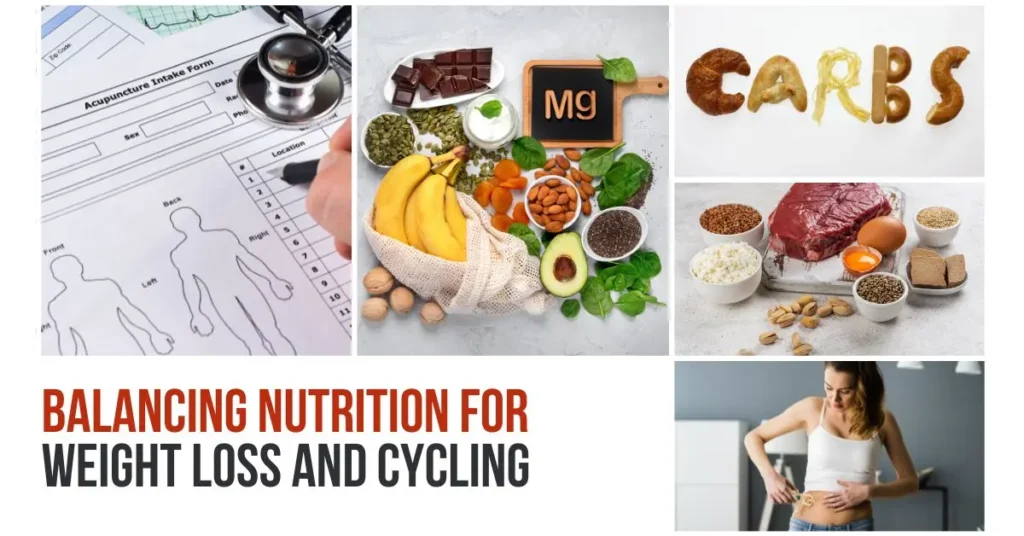
Welcome to the ultimate guide to turbocharging your weight loss journey with bicycling!
If you’re looking for an effective and enjoyable way to shed those extra pounds, cycling offers a fantastic solution.
Not only does it provide a great cardiovascular workout, but it also allows you to explore the world around you and enjoy the exhilarating feeling of the wind in your face as you pedal your way to a healthier, fitter you.
In this comprehensive guide, we will delve into the various aspects of cycling for weight loss. From choosing the right bicycle to setting realistic goals, creating workout plans, and optimizing your calorie burn, we’ll cover it all.
Get ready to embark on a transformative journey that combines the joy of cycling with the satisfaction of achieving your weight loss goals.
The Benefits of Cycling for Weight Loss

Before we dive into the specifics, let’s explore the numerous benefits that cycling brings to your weight loss journey.
Cycling is a low-impact exercise that puts less strain on your joints compared to activities like running, making it suitable for individuals of all fitness levels. Here are some key benefits of cycling for weight loss:
- Calorie Burning Power: Cycling is a highly effective calorie-burning activity. Depending on factors such as your weight, intensity, and duration of the ride, you can burn anywhere from 400 to 1000 calories per hour. This makes it a potent tool for creating a calorie deficit necessary for weight loss.
- Cardiovascular Health: Regular cycling strengthens your heart, improves blood circulation, and lowers the risk of cardiovascular diseases. It enhances your endurance, allowing you to push yourself further in your weight loss journey.
- Muscle Toning: Cycling engages multiple muscle groups, including the legs, core, and glutes. As you pedal, you’ll be building lean muscle mass, which not only improves your strength and stability but also boosts your metabolism.
- Low-Impact Exercise: Unlike high-impact activities, cycling is gentle on your joints, reducing the risk of injuries and making it an ideal option for individuals with joint problems or those recovering from injuries.
- Stress Relief: Cycling is an excellent stress-relieving activity. The rhythmic motion and the outdoor environment can help clear your mind, reduce anxiety, and boost your mood.
- Versatility and Accessibility: Cycling offers versatility in terms of terrain and intensity. You can choose to ride on roads, trails, or even indoors. It’s also an accessible activity that can be easily incorporated into your daily routine, whether it’s commuting to work or running errands.
Now that we’ve highlighted the benefits of cycling for weight loss, let’s explore the key components that will help you maximize your results.
Getting Started: Choosing Best Cycle for Weight Loss
The first step in your cycling journey for weight loss is selecting the right bicycle that suits your needs and preferences.
Choosing the perfect bike can greatly enhance your comfort and enjoyment while riding. Here are some important factors to consider when selecting a bicycle:

- Types of Bicycles: There are various types of bicycles available, including non-gear bikes, road bikes, mountain bikes, hybrid bikes, and more. Each type is designed for specific terrain and riding styles. Determine the type of cycling you’ll primarily engage in and choose a bike accordingly.
- Bike Fit: Proper bike fit is essential for comfort, efficiency, and injury prevention. Visit a local bike shop or consult with a professional to ensure your bike is adjusted to fit your body proportions. Factors such as saddle height, handlebar reach, and frame size, and tyre size play a crucial role in finding the right fit.
- Frame Material: Bicycles come in different frame materials, such as aluminum, carbon fiber, steel, and titanium. Each material has its own characteristics in terms of weight, durability, and ride quality. Consider your budget, riding style, and preferences when selecting the frame material.
- Components: Pay attention to the components of the bicycle, including gears, brakes, and wheels. High-quality components can greatly enhance your cycling experience and performance.
- Test Rides: Before making a purchase, take the bike for a test ride to ensure it feels comfortable and responsive. Test different models and sizes to find the one that suits you best.
Remember, selecting the best cycle for weight loss is a personal choice that should align with your specific goals and preferences.
Take your time to research, seek expert advice, and test different options to find the perfect ride that will accompany you on your weight loss journey.
Setting Realistic Goals for Weight Loss
Setting realistic and achievable goals is vital to stay motivated and focused on your weight loss journey. Here are some tips to help you set realistic goals:

- Define Your Why: Understand your reasons for wanting to lose weight through bicycling. Whether it’s improving your health, increasing your fitness level, or boosting your confidence, knowing your why will help you stay committed.
- Consult with a Healthcare Professional: Before starting any weight loss program, consult with a healthcare professional or a registered dietitian. They can provide personalized guidance based on your health status, help you set realistic weight loss goals, and provide nutritional advice.
- SMART Goals: Use the SMART framework to set goals that are Specific, Measurable, Attainable, Relevant, and Time-bound. For example, instead of saying, “I want to lose weight,” make it specific and measurable by saying, “I want to lose 10 pounds in the next three months by cycling four times a week.”
- Break it Down: Break your overall weight loss goal into smaller, manageable milestones. Celebrate these milestones along the way to stay motivated. For example, if your goal is to lose 20 pounds, set smaller targets of 5 pounds at a time.
- Track Your Progress: Keep a record of your cycling activities, including the duration, distance, and intensity of your rides. This will help you track your progress and make adjustments if needed. Utilize fitness trackers, and smartphone apps like strava or watches compatible with strava.
- Be Realistic: Set realistic expectations for your weight loss journey. Healthy and sustainable weight loss occurs at a rate of 1-2 pounds per week. Avoid crash diets or extreme exercise regimens that may have adverse effects on your health.
- Celebrate Non-Scale Victories: Weight loss is not solely about the numbers on the scale. Celebrate non-scale victories, such as increased stamina, improved energy levels, or fitting into smaller clothing sizes. Acknowledge and appreciate the positive changes happening in your body and overall well-being.

Setting realistic goals ensures a positive and sustainable weight loss journey. By breaking down your goals, tracking your progress, and celebrating milestones, you’ll stay motivated and inspired to achieve your desired results.
Creating an Effective Cycling Workout Plan
Now that you have your bicycle and realistic goals in place, it’s time to create an effective cycling workout plan that aligns with your objectives.
A well-designed workout plan will optimize your weight loss efforts, improve your fitness level, and keep your workouts varied and enjoyable. Here are some key elements to consider when creating your plan:

- Frequency: Determine how often you’ll cycle each week. Aim for a minimum of three to four cycling sessions per week to ensure consistent progress. This frequency allows for adequate recovery between rides while maintaining a regular routine.
- Duration: Decide on the duration of each cycling session based on your current fitness level and schedule. Start with shorter rides and gradually increase the duration as your fitness improves. Aim for at least 30 minutes to an hour of cycling per session.
- Intensity: Incorporate a mix of intensity levels in your workouts to challenge your body and stimulate weight loss. Include both moderate-paced rides and high-intensity intervals. Gradually increase the intensity as your fitness level improves.
- Types of Rides: Vary your rides to keep your workouts interesting and engaging. Include different types of rides, such as endurance rides, hill climbs, interval training, and recovery rides. This variety will challenge different muscle groups and prevent boredom.
- Progression: Plan for progression in your workouts to continually challenge your body and avoid plateaus. Increase the duration or intensity of your rides gradually over time. Set new goals to keep pushing yourself further.
- Cross-Training and Rest Days: Consider incorporating cross-training activities, such as strength training or yoga, on days when you’re not cycling. These activities help improve overall fitness, strengthen muscles, and prevent overuse injuries. Additionally, allow for rest days to give your body time to recover and repair.
By structuring your cycling workout plan with these elements in mind, you’ll optimize your weight loss efforts and enjoy a well-rounded fitness routine.
Building Endurance: Long Rides and Interval Training
Building endurance is a key component of cycling for weight loss. Endurance rides and interval training can help improve your stamina, increase calorie burn, and boost your overall fitness level. Let’s explore these two approaches in detail:
Endurance Rides: Endurance rides are longer, steady-paced rides designed to improve your cardiovascular endurance and teach your body to efficiently utilize fat stores for energy. Here are some tips for incorporating endurance rides into your workout plan:

- Longer Distances: Gradually increase the distance of your rides over time. Start with a comfortable distance and add a few miles each week until you reach your desired target. Aim for rides that last between 60 to 120 minutes.
- Steady Pace: Maintain a steady, moderate pace throughout your endurance rides. This pace should be sustainable, allowing you to have a conversation without feeling breathless.
- Proper Fueling: Ensure you have proper nutrition and hydration strategies in place for longer rides. Consume a balanced meal or snack before your ride, and carry energy gels or bars to fuel yourself during the ride.
- Mindful Recovery: Allow for proper recovery after endurance rides. Focus on replenishing your body with nutritious foods, hydrating adequately, and getting sufficient rest to support muscle repair and growth.

Interval Training: Interval training involves alternating between periods of high-intensity effort and active recovery. This type of training can help increase your cardiovascular fitness, boost calorie burn, and improve your speed and power on the bike. Here’s how to incorporate interval training into your workouts:
- Warm-up: Start with a 10-15 minute warm-up, gradually increasing your pace to get your muscles and cardiovascular system ready for the intense intervals.
- Work Intervals: Perform short bursts of high-intensity efforts, such as sprinting or cycling at a challenging resistance level. Aim for 20-60 seconds of intense effort, pushing yourself to your maximum capacity.
- Recovery Intervals: Follow each work interval with an active recovery period. Slow down your pace or reduce the resistance, allowing your heart rate to lower and your breathing to recover.
- Repetition: Repeat the work and recovery intervals for a specific number of sets. Start with 4-6 sets and gradually increase as your fitness level improves.
- Cool-down: End your interval training session with a 10-15 minute cool-down, gradually decreasing your pace to allow your body to return to its resting state.
Incorporating both endurance rides and interval training into your cycling routine will enhance your endurance, maximize calorie burn, and provide a well-rounded approach to weight loss.
Optimizing Calorie Burn: High-Intensity Cycling
If your primary goal is to maximize calorie burn during your cycling workouts, high-intensity cycling is a fantastic strategy. High-intensity workouts elevate your heart rate, increase your metabolic rate, and torch calories long after your ride is over. Here’s how to optimize calorie burn through high-intensity cycling:

- Interval Training: As mentioned earlier, interval training is an effective way to incorporate high-intensity efforts into your rides. Alternate between short bursts of all-out sprints or intense hill climbs and active recovery periods.
- Tabata Training: Tabata training is a specific type of high-intensity interval training that involves 20 seconds of maximum effort followed by 10 seconds of rest. Repeat this pattern for several cycles, totaling four minutes. Incorporate Tabata-style intervals into your cycling workouts for a quick and intense calorie-burning session.
- Climbing Challenges: Find hilly routes or incorporate simulated hill climbs into your rides. Uphill cycling requires more effort, engages different muscle groups, and elevates your heart rate, resulting in increased calorie burn.
- Sprints and Power Intervals: Add sprints and power intervals to your rides, where you pedal at maximum effort for a short duration, followed by a recovery period. These intense bursts of speed increase your overall calorie expenditure.
- Circuit Training: Combine cycling with bodyweight exercises or strength training intervals. For example, cycle at a moderate pace for a few minutes, then dismount and perform a set of squats, lunges, or push-ups. Alternate between cycling and strength exercises for a full-body, calorie-burning workout.
Remember to listen to your body and gradually increase the intensity of your workouts. High-intensity cycling can be challenging, so ensure you’re adequately warmed up, hydrated, and prepared for the demands it places on your body.
Combining Cycling with Strength Training
While cycling itself provides an excellent cardiovascular workout, incorporating strength training into your routine can greatly enhance your weight loss efforts.
Strength training helps build lean muscle mass, increases your metabolic rate, and improves overall body composition. Here’s how to combine cycling with strength training:

- Dedicate Separate Days: Designate specific days for cycling and separate days for strength training. This allows you to give your best effort to each type of workout without compromising either.
- Full-Body Exercises: Focus on compound exercises that engage multiple muscle groups simultaneously. Examples include squats, lunges, deadlifts, push-ups, and rows. These exercises maximize calorie burn and build functional strength.
- Target Key Muscle Groups: Pay attention to the muscle groups involved in cycling, such as the legs, core, and glutes. Include exercises that specifically target these areas, such as leg presses, hamstring curls, calf raises, planks, and glute bridges.
- Circuit Training: Combine cycling with circuit training for a comprehensive workout. Alternate between short bursts of cycling and strength exercises, allowing minimal rest between sets. This approach keeps your heart rate elevated and maximizes calorie burn.
- Balance and Stability: Incorporate exercises that improve balance and stability, such as single-leg squats or balance board exercises. These exercises enhance your cycling performance and reduce the risk of injuries.
- Gradual Progression: Start with lighter weights and gradually increase the resistance or weight as your strength improves. Focus on proper form and technique to avoid injuries.
Remember to include rest days for muscle recovery and growth. Strength training can be done at home with bodyweight exercises or at a gym using resistance machines, free weights, or resistance bands.
Consulting with a certified fitness professional can help you develop a tailored strength training program that complements your cycling routine.
Balancing Nutrition for Weight Loss and Cycling
Cycling for weight loss goes hand in hand with a balanced and nutritious diet. Proper nutrition fuels your rides, supports muscle recovery, and aids in weight management. Consider the following guidelines to balance nutrition with your cycling routine:

- Caloric Intake: Determine your daily caloric needs based on your weight, height, age, gender, and activity level. Aim for a moderate calorie deficit to support weight loss while providing enough energy for cycling.
- Macronutrients: Focus on consuming balanced meals that include all three macronutrients: carbohydrates, protein, and healthy fats. Carbohydrates provide energy for your rides, protein supports muscle repair and growth, and healthy fats contribute to overall health.
- Carbohydrates: Prioritize complex carbohydrates, such as whole grains, fruits, vegetables, and legumes. These provide sustained energy and essential nutrients. Fuel up with carbohydrates before and after your rides to support performance and recovery.
Cycling Reduce Thigh Fat? Discover the Truth Here!
- Protein: Include lean protein sources, such as poultry, fish, lean meats, eggs, dairy, legumes, and plant-based protein options. Aim for a serving of protein with each meal to support muscle repair and satiety.
- Healthy Fats: Incorporate sources of healthy fats, such as avocados, nuts, seeds, olive oil, and fatty fish like salmon. These fats provide essential fatty acids and help you feel satisfied.
- Reduce Belly Fat: When it comes to shedding excess belly fat, a combination of regular cycling and a balanced diet is key. By engaging in cycling, you can effectively burn calories and target fat stores throughout your body, including the stubborn belly area. Pairing your cycling routine with a diet rich in healthy fats can further enhance your efforts.
- Hydration: Stay well-hydrated before, during, and after your rides. Drink water regularly throughout the day, and consider electrolyte-rich beverages during longer or intense rides.
- Timing: Eat a balanced meal or snack containing carbohydrates and protein about two to three hours before your ride. Fuel during longer rides with easily digestible carbohydrates, such as energy gels or sports drinks. After your ride, consume a recovery meal or snack containing carbohydrates and protein to replenish glycogen stores and support muscle recovery.
- Portion Control: Be mindful of portion sizes to manage overall calorie intake. Use measuring tools or visual cues to gauge appropriate portion sizes and avoid overeating.
- Nutrient Density: Opt for nutrient-dense foods that provide a variety of vitamins, minerals, and antioxidants. Include plenty of colorful fruits and vegetables in your meals to support overall health.
- Individual Needs: Remember that nutrition requirements vary for each individual. Consult a registered dietitian to create a personalized nutrition plan that meets your needs and goals.
Balancing your nutrition with your cycling routine ensures you have the energy and nutrients necessary for successful weight loss and optimal performance.
Cycling Reduce Hip Fat? Discover the Truth Here!
Hydration and Fueling Strategies for Optimal Performance
Proper hydration and fueling strategies are crucial for maintaining optimal performance during your cycling workouts and supporting weight loss. Here are some tips to stay hydrated and fueled:

- Pre-Ride Hydration: Start your ride well-hydrated by consuming water in the hours leading up to your cycling session. Aim to drink at least 16 to 20 ounces of water two to three hours before your ride.
- During-Ride Hydration: Drink water or an electrolyte-rich beverage during your rides, especially for longer or more intense sessions. Sip regularly to maintain hydration levels. Consider using a hydration pack or water bottle mounted on your bike for convenient access.
- Electrolyte Replacement: During longer or more intense rides, replenish electrolytes lost through sweat. Electrolytes, such as sodium, potassium, and magnesium, play a crucial role in maintaining fluid balance and muscle function. Choose sports drinks or electrolyte tablets to support proper electrolyte levels.
- Fueling During Rides: For rides lasting longer than 90 minutes, consume easily digestible carbohydrates to maintain energy levels. Energy gels, energy bars, or homemade snacks like bananas, dates, or granola bars can provide a quick source of fuel.
- Post-Ride Recovery: After your ride, replenish your body with a combination of carbohydrates and protein to aid in muscle recovery and glycogen replenishment. A balanced meal or snack containing these macronutrients within 30 minutes to an hour after your ride is beneficial.
- Monitoring Hydration: Pay attention to signs of dehydration, such as dark-colored urine, dizziness, fatigue, or excessive thirst. Adjust your hydration strategy accordingly and aim to drink enough fluids to maintain clear or light-colored urine.
Remember that hydration and fueling needs vary based on factors like duration, intensity, weather conditions, and individual sweat rates. Experiment with different strategies during training rides to find what works best for you.
Monitoring Progress: Tracking Tools and Apps
Tracking your progress is an excellent way to stay motivated and monitor your weight loss and cycling performance. Several tracking tools and apps are available to help you stay on top of your goals. Consider using the following:

- Cycling Computers: Cycling computers are devices that attach to your bike and provide real-time data on your speed, distance, time, and even heart rate. They can help you track your progress, set goals, and analyze your rides.
- GPS Watches: GPS watches offer similar features to cycling computers but can also be used for other activities like running or swimming. They provide accurate tracking of your routes, distances, and other performance metrics.
- Smartphone Apps: Many smartphone apps are designed specifically for cyclists. They use GPS to track your rides, provide performance data, and offer training plans or challenges. Popular cycling apps include Strava, MapMyRide, and Ride with GPS.
- Fitness Trackers: Fitness trackers, such as those worn on the wrist, can track your daily activity, including cycling. They provide data on your heart rate, steps taken, calories burned, and sleep patterns. Some models also offer GPS tracking.
- Training Platforms: Online training platforms, like TrainingPeaks or Zwift, allow you to plan and track your cycling workouts, set goals, and analyze your progress. They often provide additional resources and training plans to enhance your cycling experience.
- Journaling: Keeping a simple journal to track your rides, distances, and perceived effort can also be effective. Note your feelings, improvements, or challenges faced during each ride. This reflective practice helps you stay connected with your progress and mindset.
Remember to use these tools as aids rather than sole determinants of your success. The data they provide can be helpful, but it’s essential to listen to your body, prioritize enjoyment, and focus on the overall experience of cycling for weight loss.
Injury Prevention and Safety Measures
Prioritizing injury prevention and adhering to safety measures are vital for a successful and sustainable cycling journey. Here are some guidelines to keep in mind:

- Bike Fit: Ensure your bike is properly fitted to your body measurements and riding style. An incorrectly fitted bike can lead to discomfort, pain, and increased risk of injury. Consult a professional or bike shop to optimize your bike fit.
- Warm-up and Cool-down: Always warm up before your rides by performing dynamic stretches or a short low-intensity ride. This prepares your muscles and joints for exercise. Similarly, cool down with some light stretching or a gentle spin to promote recovery and flexibility.
- Proper Technique: Learn and practice proper cycling technique to optimize efficiency and reduce the risk of overuse injuries. This includes maintaining good posture, using appropriate gear ratios, and pedaling with a smooth and circular motion.
- Gradual Progression: Gradually increase the duration, intensity, and distance of your rides to allow your body to adapt and minimize the risk of overuse injuries. Avoid sudden increases in training volume or intensity.
- Protective Gear: Always wear a well-fitted helmet to protect your head in case of falls or accidents. Consider wearing appropriate cycling clothing, including padded shorts, gloves, and reflective gear for visibility.
- Road Safety: Obey traffic laws, ride defensively, and be aware of your surroundings. Signal your intentions, use hand signals, and make eye contact with drivers when necessary. Ride on designated cycling paths whenever possible.
- Maintenance Checks: Regularly inspect your bike for any mechanical issues or wear and tear. Ensure your tires are properly inflated, brakes are functioning correctly, and all components are in good working order.
- Cross-Training: Incorporate cross-training activities into your routine to strengthen supporting muscles and reduce imbalances. Activities like stretching, yoga, strength training, or swimming can complement your cycling workouts.
- Recovery and Rest: Allow for adequate rest and recovery days to prevent overtraining and promote healing. Listen to your body and address any signs of fatigue, soreness, or persistent pain.
- Professional Guidance: If you’re new to cycling or have specific concerns or injuries, consider consulting with a professional coach, physical therapist, or sports medicine specialist. They can provide guidance, and personalized training plans, and help address any specific issues.
By prioritizing injury prevention and safety, you can enjoy the benefits of cycling while minimizing the risk of setbacks or injuries.
Staying Motivated and Overcoming Plateaus
Staying motivated is essential for long-term success in your cycling and weight loss journey. It’s normal to encounter plateaus or periods of decreased motivation along the way. Here are some strategies to help you stay on track:

- Set Realistic and Specific Goals: Establish clear, achievable goals that align with your weight loss and cycling objectives. Make them specific, measurable, attainable, relevant, and time-bound (SMART goals). Having a target to work towards keeps you motivated and focused.
- Track Progress: Regularly review your progress to see how far you’ve come. Celebrate your achievements, whether it’s completing a challenging ride or reaching a weight loss milestone. Tracking your progress visually, through photos or measurements, can be motivating.
- Variety and Challenges: Keep your cycling routine interesting by incorporating variety. Explore different routes, try new terrains, or join group rides or cycling events. Challenging yourself with personal records, hill climbs, or time trials can reignite your motivation.
- Buddy System: Find a cycling buddy or join a cycling club or community. Exercising with others provides accountability, support, and camaraderie. You can share experiences, set shared goals, and motivate each other during challenging times.
- Reward System: Establish a reward system for achieving your goals. Treat yourself to something special, like a new piece of cycling gear or a spa day, when you reach specific milestones. Rewards help reinforce positive behavior and provide motivation.
- Mindset and Positive Self-Talk: Cultivate a positive mindset and practice positive self-talk. Replace negative thoughts or self-doubt with encouraging and uplifting statements. Focus on your progress, strengths, and the enjoyment you derive from cycling.
- Visualization and Affirmations: Visualize yourself achieving your goals and imagine the feelings of success. Use positive affirmations to reinforce your belief in yourself and your ability to overcome challenges.
- Seek Inspiration: Follow cycling-related social media accounts, read books or articles, and watch documentaries or videos about cycling success stories. Surrounding yourself with inspiring content can fuel your motivation.
- Periodization: Incorporate periodization into your training plan by alternating between periods of high intensity and lower intensity or recovery. This structured approach can help break through plateaus and prevent burnout.
- Embrace Rest and Recovery: Allow yourself sufficient rest and recovery periods. Rest days are just as important as training days. Your body needs time to repair, adapt, and grow stronger.
See also: How Long Does It Take To Bike 3 Miles?
Remember that motivation can fluctuate, and it’s normal to have off days. Be kind to yourself, celebrate small victories, and focus on the joy of cycling and the overall health benefits it provides.
Cycling for Weight Loss: Tips for Beginners
If you’re new to cycling and want to use it as a tool for weight loss, here are some tips to help you get started on the right track:

- Choose the Right Bike: Select a bike that suits your riding preferences and needs. Consider factors such as terrain, comfort, and intended use (road cycling, mountain biking, or indoor cycling).
- It’s important to note that if weight loss is your primary goal, it may be best to avoid using a fat bike.
- Understanding the disadvantages of using a fat bike can help you make an informed decision and maximize your weight loss journey.
- Start Slowly: Begin with shorter rides at a comfortable pace to build endurance and familiarize yourself with the bike. Gradually increase the duration and intensity of your rides as you progress.
- Set Realistic Goals: Set achievable weight loss and cycling goals that align with your current fitness level. Break them down into smaller milestones to track your progress effectively.
- Find a Safe Riding Environment: Seek out safe routes, bike paths, or quiet roads with minimal traffic for your initial rides. Familiarize yourself with local cycling regulations and share the road responsibly.
- Focus on Technique: Learn proper cycling techniques, including pedal stroke, shifting gears, and maintaining a consistent cadence. This will help improve efficiency, reduce the risk of injury, and enhance your overall cycling experience.
- Establish a Routine: Set a regular cycling schedule that fits into your lifestyle. Consistency is key for weight loss and fitness improvements. Aim for at least three to four cycling sessions per week.
- Gradual Progression: Gradually increase the duration and intensity of your rides over time. Avoid pushing yourself too hard or attempting advanced techniques before you’re ready. Listen to your body and respect your limits.
- Mix Up Your Rides: Include a mix of shorter, high-intensity rides and longer, steady-paced rides to challenge your body and stimulate weight loss. Variation keeps your rides interesting and prevents monotony.
- Seek Guidance and Support: Consider working with a cycling coach, joining a beginner’s cycling group, or taking a cycling class. These resources can provide guidance, structured training plans, and a supportive community.
- Enjoy the Journey: Embrace the joy of cycling and appreciate the physical and mental benefits it offers. Focus on the experience and the process of improving your fitness and well-being.
Remember, the most important aspect is to enjoy cycling and make it a sustainable part of your lifestyle. As you gain confidence and progress, you’ll experience the transformative effects of cycling for weight loss.
Advanced Techniques for Experienced Riders
For experienced riders looking to take their weight loss and cycling performance to the next level, here are some advanced techniques to consider:

- Interval Training: Incorporate interval training into your rides to maximize calorie burn and improve cardiovascular fitness. Alternate between periods of high-intensity effort and active recovery.
- Hill Training: Seek out hilly routes or include hill repeats in your training. Climbing hills challenges your muscles, burns more calories, and builds strength and power.
- High-Intensity Interval Training (HIIT): Integrate HIIT sessions into your training routine. These short bursts of maximum effort followed by short recovery periods are highly effective for calorie burning and improving metabolic fitness.
- Long Endurance Rides: Include longer endurance rides in your schedule to build aerobic capacity, enhance fat-burning efficiency, and improve endurance for longer distances.
- Strength and Resistance Training: Supplement your cycling with strength training exercises to build muscle, increase metabolism, and enhance overall body composition. Focus on compound movements targeting major muscle groups.
- Cycling Challenges and Events: Set your sights on challenging cycling events or organized races. Having a specific goal can provide additional motivation and focus for your training.
- Periodized Training: Adopt a periodized training plan that incorporates cycles of different training focuses, such as base building, strength, speed, and recovery. This structured approach optimizes performance and minimizes the risk of overtraining.
- Nutritional Optimization: Fine-tune your nutrition to support your training and weight loss goals, even when cycling after dinner. It’s important to pay attention to your food choices and portion sizes, especially during evening rides. While cycling after dinner can be a great way to burn calories and aid digestion, it’s essential to strike a balance between fueling your ride and not overeating. Opt for lighter, easily digestible meals or snacks before your ride, such as a small salad or a protein-rich smoothie.
- Avoid heavy, greasy foods that may cause discomfort or hinder your performance. Additionally, be mindful of your overall calorie intake throughout the day to align with your weight loss goals.
- If you need guidance on nutrition and meal planning, consider consulting a registered dietitian or sports nutritionist who can help you create a personalized nutrition plan that optimizes your cycling performance and supports your weight loss journey.
- Technology Integration: Utilize advanced cycling technology, such as power meters or smart trainers, to track and analyze your performance metrics. This data can inform your training and help optimize your efforts.
- Cross-Training Variety: Incorporate cross-training activities that complement your cycling, such as swimming, running, or yoga. These activities can improve overall fitness, prevent muscle imbalances, and provide mental stimulation.
Remember to gradually implement these advanced techniques and listen to your body. Push yourself while maintaining a balance between challenging workouts and adequate recovery.
The Role of Rest and Recovery in Weight Loss
Rest and recovery are essential components of a successful weight loss and cycling journey. While challenging workouts are necessary, giving your body adequate time to recover is equally important. Here’s why rest and recovery matter:

- Muscle Repair and Growth: During exercise, especially intense or prolonged workouts, muscles experience micro-tears. Rest and recovery allow these muscles to repair and rebuild, leading to improved strength and endurance.
- Injury Prevention: Rest days help prevent overuse injuries caused by repetitive motion or excessive strain on muscles and joints. Regular rest reduces the risk of stress fractures, tendinitis, and other common cycling injuries.
- Hormonal Balance: Intense exercise can temporarily elevate stress hormones like cortisol. Adequate rest helps restore hormonal balance and reduces the risk of hormonal imbalances that can impact weight loss efforts, including sperm count in males and breast size in females. Taking rest days and prioritizing recovery allows the body to regulate hormone levels, supporting overall health and optimizing weight loss.
- Energy Restoration: Rest and recovery replenish energy stores, such as glycogen, in the muscles and liver. This ensures you have sufficient energy for future workouts and helps maintain performance levels.
- Mental Well being: Rest allows time for mental rejuvenation. Cycling and weight loss journeys can be mentally demanding, and taking breaks can prevent burnout and promote overall mental well-being.
- Improved Performance: Strategic rest and recovery periods optimize performance gains. Overtraining can lead to decreased performance, diminished motivation, and plateaus. Well-planned rest intervals promote super compensation, where the body adapts and becomes stronger.
- Sleep Quality: Quality sleep plays a vital role in weight loss, recovery, and overall health. It aids in muscle repair, regulates hunger hormones, and promotes optimal metabolic function.
To incorporate rest and recovery into your cycling routine:

- Schedule Regular Rest Days: Plan rest days into your training schedule to allow for active recovery or complete rest. Active recovery can include gentle activities like stretching, yoga, or light walks.
- Listen to Your Body: Pay attention to signals from your body, such as fatigue, soreness, or persistent pain. If you’re feeling excessively fatigued or experiencing any pain, adjust your training or take additional rest days.
- Sleep Well: Prioritize quality sleep by establishing a consistent sleep schedule and creating a sleep-friendly environment. Aim for seven to nine hours of sleep per night.
- Nutrition and Hydration: Support your recovery by consuming a balanced diet that includes adequate protein, carbohydrates, and healthy fats. Stay hydrated before, during, and after rides to aid in recovery.
Related Post: Does Cycling Reduce Upper Body Fat?
Remember that rest and recovery are not signs of weakness but integral components of a successful weight loss and cycling plan. Embrace rest days as an opportunity for growth and improvement.
Integrating Cycling into Daily Life: Commuting and Errands
Cycling can be more than just a form of exercise; it can also become a practical and eco-friendly means of transportation. Integrating cycling into your daily life for commuting and running errands offers numerous benefits:

- Eco-Friendly Transportation: Cycling produces zero emissions, making it an environmentally friendly mode of transportation. By choosing cycling over motorized vehicles for commuting or short errands, you contribute to reducing air pollution and your carbon footprint.
- Cost Savings: Cycling eliminates the need for fuel expenses and parking fees. By using your bike for daily transportation, you can save money on transportation costs.
- Improved Physical Fitness: Cycling as a means of commuting or running errands incorporates physical activity into your daily routine. Regular cycling improves cardiovascular health, builds strength, and contributes to weight loss.
- Time Efficiency: In urban areas with traffic congestion, cycling can often be faster than driving or public transportation for short distances. You can bypass traffic jams, find convenient parking spots, and avoid waiting for public transportation.
- Mental Well-being: Cycling outdoors boosts mood, reduces stress levels, and enhances mental well-being. Incorporating cycling into your daily life provides an opportunity to enjoy the fresh air, connect with nature, and clear your mind.
- Versatility: Bicycles allow access to areas that may not be easily reachable by cars or public transportation. You can explore narrow streets, parks, and pedestrian-only zones, giving you a different perspective on your surroundings.
- Community Engagement: Cycling for commuting or errands can connect you with a local cycling community. You may find cycling groups, bike-sharing programs, or cycling events that allow you to engage with like-minded individuals.
When integrating cycling into daily life:
- Plan Your Routes: Identify safe and convenient cycling routes for your regular commute or errands. Utilize bike lanes, dedicated cycling paths, or quieter streets whenever possible.
- Safety First: Always prioritize safety by wearing a helmet, using appropriate lights and reflectors, and following traffic rules. Be aware of other road users and practice defensive cycling.
- Equipment and Accessories: Invest in essential cycling equipment, such as a sturdy lock, panniers or baskets for carrying items, and clothing suitable for the weather and your destination.
- Time Management: Allow for extra time when cycling for commuting or running errands. Consider factors like weather conditions, parking availability, and potential delays.
- Combine Cycling with Public Transportation: If your commute involves longer distances, consider combining cycling with public transportation. Many cities offer bike racks or dedicated spaces on buses or trains.
Remember to gradually incorporate cycling into your daily routine and enjoy the added benefits of active transportation.
Cycling for Weight Loss: Success Stories and Inspirations
Hearing success stories from individuals who have used cycle for weight loss can be inspiring and motivating. Here are a few examples of people who have achieved their weight loss goals through cycling:

Sagar Shirbhate – A Journey of Dedication and Endurance
Sagar Shirbhate, a resident of Pune, India, has made a name for himself in the world of cycling through his sheer dedication and unwavering passion for the sport. With an impressive total of 109,274+ kilometers completed over the years, Sagar has truly embraced cycling as a lifestyle.
One of the highlights of Sagar’s cycling journey was his remarkable achievement of completing a staggering 619-kilometer ride, marking his longest ride to date. This extraordinary feat not only showcased his physical capabilities but also demonstrated his mental strength and determination to conquer new challenges.
Although Sagar is a professional developer by trade, he has seamlessly integrated his love for cycling into his daily life. Years ago, he recognized the potential of cycling not only as a means of transportation but also as a source of joy and personal development. Combining his passion for cycling with his professional responsibilities, Sagar has been able to strike a perfect balance, reaping the benefits of both worlds.
Sagar’s success story serves as an inspiration to others, highlighting the transformative power of cycling. Through his commitment to his craft, he has not only achieved remarkable milestones but has also experienced the countless physical and mental health benefits that come with regular cycling. His story encourages individuals from all walks of life to pursue their passions and incorporate cycling into their routines, regardless of their professional commitments.
Source: Instagram and Strava

Kirit Kokje – Defying Limits and Achieving Greatness
Meet Kirit Kokje, a resident of Pune, India, whose journey in the world of cycling is nothing short of extraordinary. With an impressive record of over 77,009+ kilometers completed, Kirit has proven to be a force to be reckoned with.
Kirit’s passion for cycling extends beyond the ordinary, as evidenced by his remarkable achievement of completing a jaw-dropping 1,227-kilometer ride, marking his longest ride to date. This awe-inspiring feat not only showcases his physical endurance but also reflects his unwavering determination to push past limits and achieve greatness.
While Kirit dedicates his professional life to teaching, he has seamlessly integrated his love for cycling into his daily routine. As a National Rowing Umpire, he understands the importance of discipline and perseverance, qualities that have undoubtedly contributed to his success in the world of cycling. Kirit’s commitment to both his profession and his cycling endeavors exemplifies the power of balancing one’s passions and responsibilities.
Kirit’s achievements extend beyond cycling alone. His athletic prowess is further exemplified by his participation in triathlons, completing three 70.3 races and one 140.6 race, where he emerged as the triumphant winner. This demonstrates his versatility as an athlete and his ability to excel in multiple disciplines.
See also: What are the Slow Cycling Race Rules?
Kirit Kokje’s success story serves as a beacon of inspiration to aspiring cyclists and athletes alike. His unwavering determination, relentless pursuit of excellence, and ability to balance his professional and athletic pursuits showcase the transformative power of passion and dedication. Kirit’s journey motivates others to set audacious goals, challenge their limits, and embrace the incredible rewards that come with pushing beyond boundaries.
Whether in the classroom, on the road, or at a triathlon event, Kirit Kokje embodies the spirit of a true champion. His story inspires individuals from all walks of life to pursue their dreams relentlessly, reminding us that with dedication, resilience, and a never-give-up attitude, we can overcome obstacles and achieve greatness.
Source: Instagram and Strava
These success stories highlight the transformative power of cycling for weight loss. Each person’s journey is unique, and finding inspiration from others can fuel your own motivation and determination.
Common Myths and Misconceptions about Cycling and Weight Loss
In the realm of cycling and weight loss, several myths and misconceptions exist. Let’s debunk some common ones:

- Myth: Cycling is only effective for leg muscles: While cycling primarily engages the muscles in the legs, it also provides a full-body workout. The core muscles, upper body, and even the mind are actively involved in maintaining balance, stability, and control while riding.
- Myth: You need an expensive bike to lose weight: While high-end bikes can offer advanced features and performance benefits, they are not a prerequisite for weight loss through cycling. A well-maintained, properly fitting bike within your budget can deliver effective results.
- Myth: Longer rides are always better for weight loss: While longer rides can burn more calories, shorter high-intensity rides can be equally effective for weight loss. The key is finding the right balance between intensity, duration, and frequency based on your fitness level and goals.
- Myth: Cycling increases height after 18: False. Height is primarily determined by genetics and bone development, and cycling does not have a direct impact on increasing height once growth plates have fused. Enjoy cycling for its other benefits like fitness and weight management.
Know More: How Much Height Can be Increased by Cycling?
- Myth: Cycling alone is sufficient for weight loss: While cycling is a fantastic cardiovascular exercise, combining it with a balanced diet and other forms of exercise can enhance weight loss results. Strength training, flexibility exercises, and a nutritious diet play significant roles in overall weight management.
- Myth: Cycling is only for the fit and experienced: Cycling is suitable for people of all fitness levels and ages. You can start at your own pace and gradually increase the intensity and duration of your rides as you progress. Beginners can seek guidance from cycling professionals or join beginner-friendly group rides to gain confidence and knowledge.
- Myth: Cycling leads to bulky legs: Contrary to popular belief, cycling typically promotes lean muscle development rather than bulky legs. It can contribute to overall body toning and help sculpt a more streamlined physique.

By debunking these myths, we encourage a more inclusive and accurate understanding of cycling for weight loss.
Conclusion
Cycling offers numerous benefits for weight loss, physical fitness, and overall well-being.
By choosing the right bicycle, setting realistic goals, and creating an effective workout plan, you can embark on a successful weight loss journey through cycling.
Remember to focus on building endurance, optimizing calorie burn, and integrating strength training. Balancing nutrition, hydration, and rest is crucial for optimal performance and recovery.
Explore different types of cycling, incorporate it into your daily life, and draw inspiration from success stories. Dispel common myths and misconceptions, and embrace cycling as a versatile and enjoyable approach to achieving your weight loss goals.
So hop on your bike, enjoy the ride, and let cycling guide you toward a healthier, fitter, and happier you.
FAQ
How often should I cycle for weight loss?
Cycling 3-4 times a week for 30-60 minutes is an effective starting point.
Can I use a stationary bike?
Absolutely! Stationary bikes offer a controlled environment for effective weight loss.
Is cycling suitable for all ages?
Yes, cycling is a low-impact exercise suitable for all age groups.
What should I eat before cycling?
Opt for a balanced meal with carbohydrates and protein 1-2 hours before your ride.
How to avoid muscle soreness?
Incorporate warm-up and cool-down exercises, and stay hydrated to prevent muscle soreness.
Are electric bikes effective for weight loss?
While less intense, electric bikes can still contribute to weight loss. Adjust intensity for desired results.






